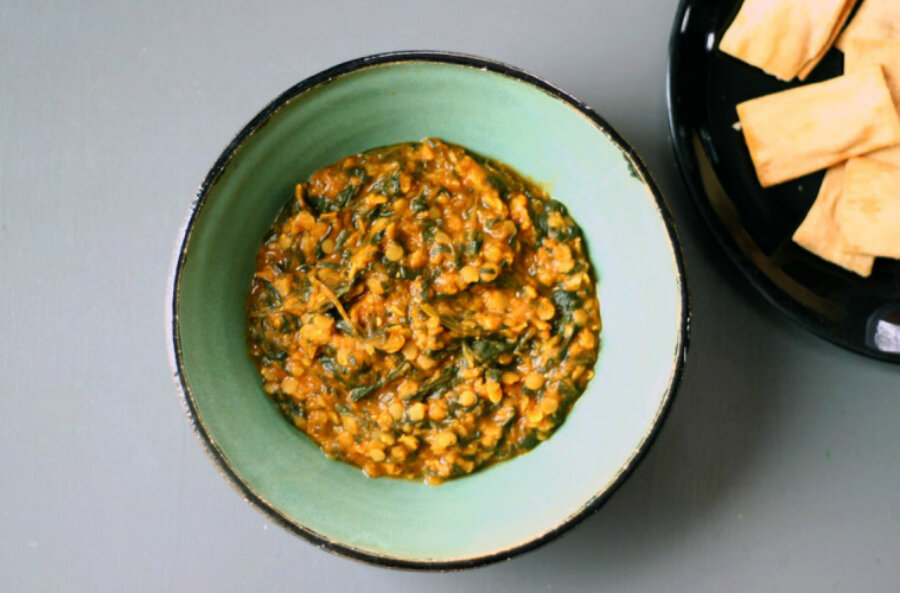Dal-palak: lentils and spinach
Loading...
I wish you could smell my house right now.
The kids are in the backyard making a snow fort, my husband is at a meeting, and I found myself alone in the kitchen. This rare circumstance fueled a desire to cook something while enjoying brief alone time. First, I turned leftover chicken into an apple-chicken salad for lunch. Then, I began opening cupboards, looking for ingredients that would spark an idea.
The vibrant, orange lentils nearly fell out of my dry goods cupboard as if they felt my vibe and elbowed their way to the front vying to be used. I recalled my friend Anita’s Dal-Palak recipe. With growing excitement, I went to the refrigerator and spice cupboard, checking each necessary ingredient off the list.
This Dal-Palak recipe is satisfying not only because it’s visually pleasing and delicious, it fills your home with intoxicating aroma. I set about measuring ingredients as I watched the kids out the kitchen window, laughing and playing, cheeks ruddy from an hour in the cold. In the silence of the kitchen, I gratefully acknowledged the welcome moment of calm. It’s so rare for me to be able to cook undisturbed!
Occasionally, I was interrupted by a knock at the backdoor with requests to reseal the all important gaps between mitten and coat sleeve, boot, and pant leg. My daughter opened the door and said, "Whoa, it smells good in here." Not only do the spiced lentils and spinach create an enticing scent, the ghee and garlic is heavenly.
Ghee is a clarified butter that is often used in Indian cuisine and other Asian cooking. You may not find it at regular grocery stores but they do have ghee at Trader Joe's. You can also substitute canola oil if you can’t find any.
Once your lentils and spinach are cooked but before you mix in the toasted garlic and lemon juice, taste the lentil mixture. It is good. But, it is astounding how the garlic butter and acidic fresh lemon juice transform the flavor.
Serve the Dal-Palak with naan (Indian bread) and or rice. You can also scoop it up with pita chips. I like to freeze individual portions for lunches. For a low carb option, you can also scoop lentils with carrots and celery.
Dal-Palak (Lentils and Spinach)
Makes 4-6 servings
1 cup red lentils
10-ounce package frozen chopped spinach or 1 lb. fresh spinach
1/4 cup tomato paste
1/2 teaspoon turmeric
1/2 teaspoon cayenne pepper (can omit or decrease for less spicy)
3/4 teaspoon salt
5 cloves garlic, finely chopped
3 tablespoons ghee (clarified butter)
1-1/2 tablespoons fresh squeezed lemon juice (about 1/2 a lemon)
1. Wash lentils and then put them in a medium sauce pan with 3 cups water over medium heat. Add spinach, turmeric, cayenne and salt. Cover and cook on medium heat stirring occasionally until lentils are tender (about 15 minutes). When lentils are soft, add tomato paste and stir until incorporated.
2. In a separate statue pan, heat ghee and add garlic. Salute until garlic is golden brown. Stir the garlic mixture into the lentil mixture. Add lemon juice and stir.
3. Serve with naan and/or rice. Can also serve with pita chips.
Related post on Whipped, The Blog: "Super" stuffed sweet potatoes








